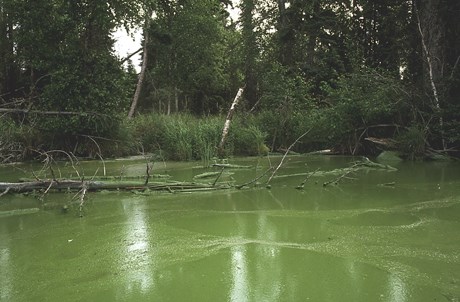LAKELAND - Just ahead of the August long weekend, a few popular spots in the St. Paul region were added to the list of lakes with blue-green algae advisories.
Alberta Health Services (AHS) identified blue-green algae in areas of Garner Lake, Floatingstone Lake and Vincent Lake.
"As the presence of blue-green algae can pose a risk to the health of humans, pets and livestock, the Health Advisory for both lakes was issued," according to Logan Clow, a spokesperson with AHS. Clow explained that AHS identifies blue-green algae (cyanobacteria) blooms through its Routine Recreational Water Quality Monitoring Program, and in follow-up to complaints.
Through the Routine Recreational Water Quality Monitoring Program, AHS personnel complete visual inspections of lakes and collect water samples for lab testing, as required. Results are normally available in one to three weeks, said Clow.
The advisories for each of the lakes will remain in place until water quality levels are deemed safe. AHS has posted signage around the lake to alert visitors to the risk and presence of blue-green algae.
"This summer, due to laboratory availability, and our ongoing response to COVID-19, the Routine Recreational Water Quality Monitoring Program has identified priority lakes for regular blue-green algae testing and monitoring," said Clow.
Lakes have been prioritized based on a number of factors, including beach popularity, since more individuals could be at risk at popular beaches. A lake’s history of blue-green algae contamination is also a consideration.
Beach operators or members of the public who suspect a blue-green algae bloom in a body of water in Alberta are asked to report their concern to their nearest AHS Environmental Public Health office.
According to Rolf Vinebrooke with the department of Biological Sciences at the University of Alberta, cyanobacterial blooms are again a little delayed in developing this summer because of the generally cloudy and wet weather conditions, which is a lot like the conditions seen last year.
But, Vinebrooke agrees the recent hot and sunny weather, along with the relatively calm wind conditions, likely stimulated the blue-green algae blooms being seen in the region.
As far as studies being done on blue-green algae, Vinebrooke said, "Due to logistical and budgetary constraints, monitoring of lakes and beaches for cyanobacterial blooms has been reduced relative to other years, and so, we are embarking on a more economical and feasible approach."
For example, Vinebrooke is leading a pivot project to determine how well satellite-imaging of lakes in Alberta can be translated into whole-lake estimates of cyanobacterial blooms.
Blue-green algae health advisories from across the province are available through the AHS website.



